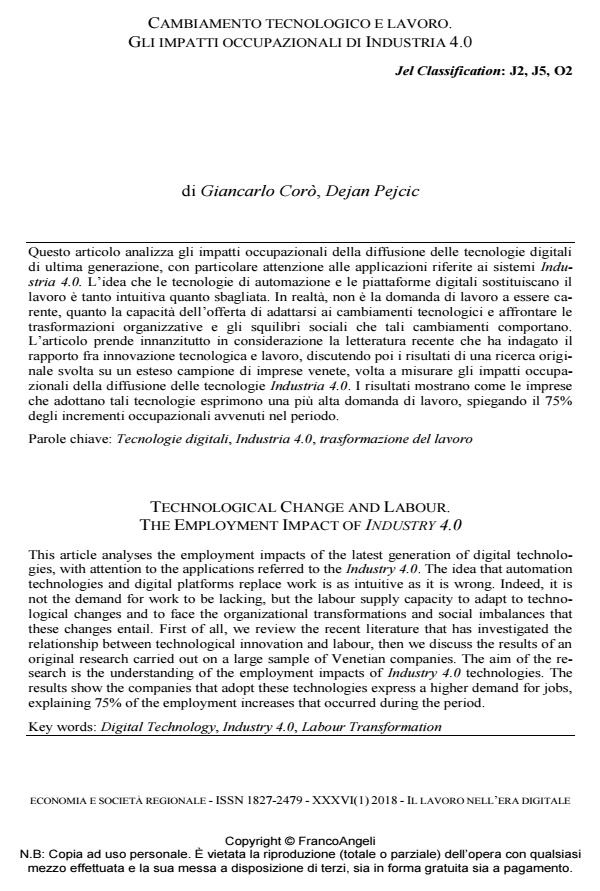Technological change and labour. the employment impact of industry 4.0
Journal title ECONOMIA E SOCIETÀ REGIONALE
Author/s Giancarlo Corò, Dejan Pejcic
Publishing Year 2018 Issue 2018/1
Language Italian Pages 18 P. 52-69 File size 341 KB
DOI 10.3280/ES2018-001005
DOI is like a bar code for intellectual property: to have more infomation
click here
Below, you can see the article first page
If you want to buy this article in PDF format, you can do it, following the instructions to buy download credits

FrancoAngeli is member of Publishers International Linking Association, Inc (PILA), a not-for-profit association which run the CrossRef service enabling links to and from online scholarly content.
This article analyses the employment impacts of the latest generation of digital technologies, with attention to the applications referred to the Industry 4.0. The idea that automation technologies and digital platforms replace work is as intuitive as it is wrong. Indeed, it is not the demand for work to be lacking, but the labour supply capacity to adapt to technological changes and to face the organizational transformations and social imbalances that these changes entail. First of all, we review the recent literature that has investigated the relationship between technological innovation and labour, then we discuss the results of an original research carried out on a large sample of Venetian companies. The aim of the research is the understanding of the employment impacts of Industry 4.0 technologies. The results show the companies that adopt these technologies express a higher demand for jobs, explaining 75% of the employment increases that occurred during the period.
Keywords: Digital Technology, Industry 4.0, Labour Transformation
Jel codes: J2, J5, O2
- La digitalizzazione del lavoro. Questioni aperte e domande di ricerca sulla transizione Giorgio Gosetti, in ECONOMIA E SOCIETÀ REGIONALE 1/2019 pp.91
DOI: 10.3280/ES2019-001008
Giancarlo Corò, Dejan Pejcic, Cambiamento tecnologico e lavoro. gli impatti occupazionali di industria 4.0 in "ECONOMIA E SOCIETÀ REGIONALE " 1/2018, pp 52-69, DOI: 10.3280/ES2018-001005